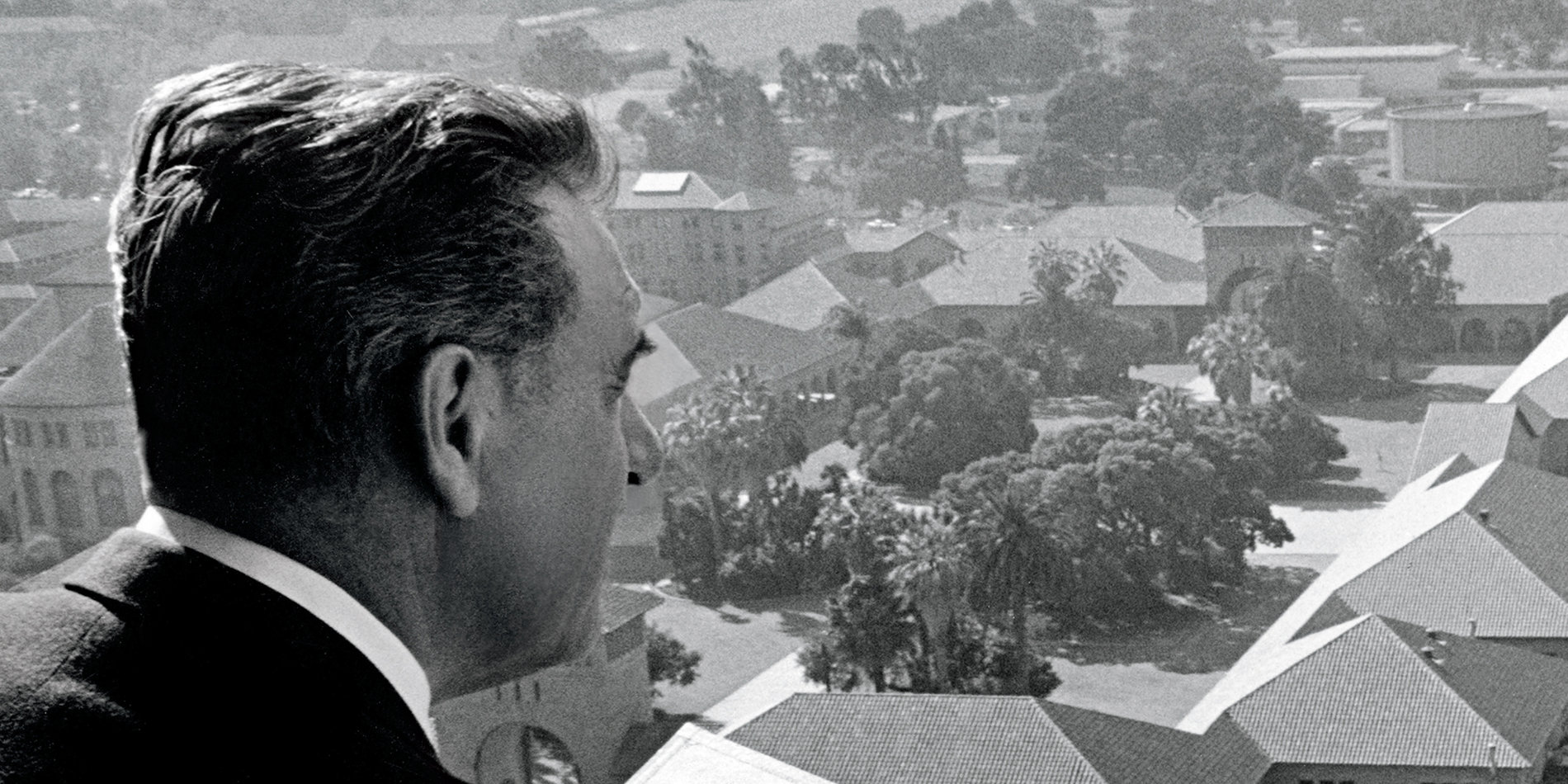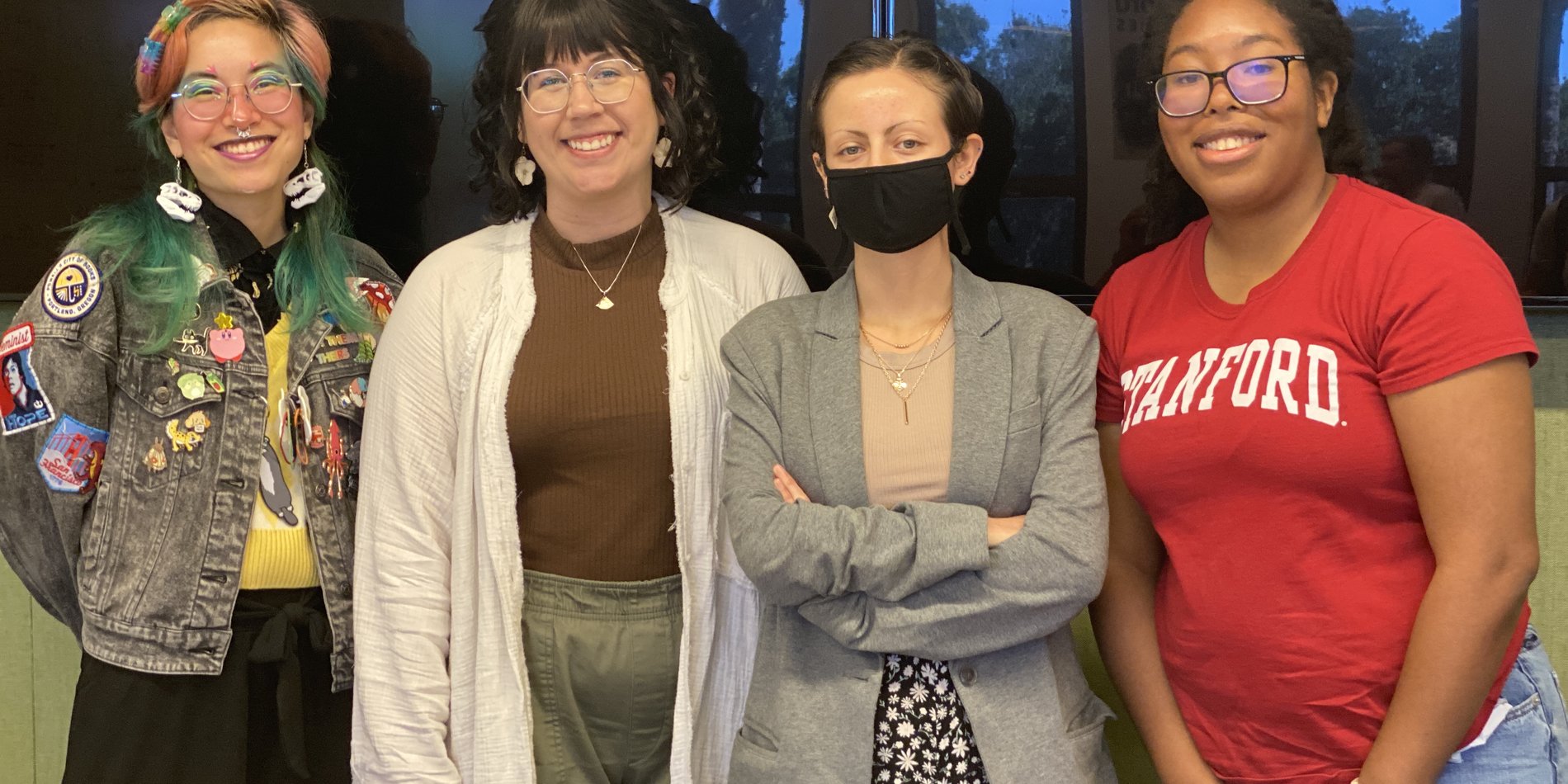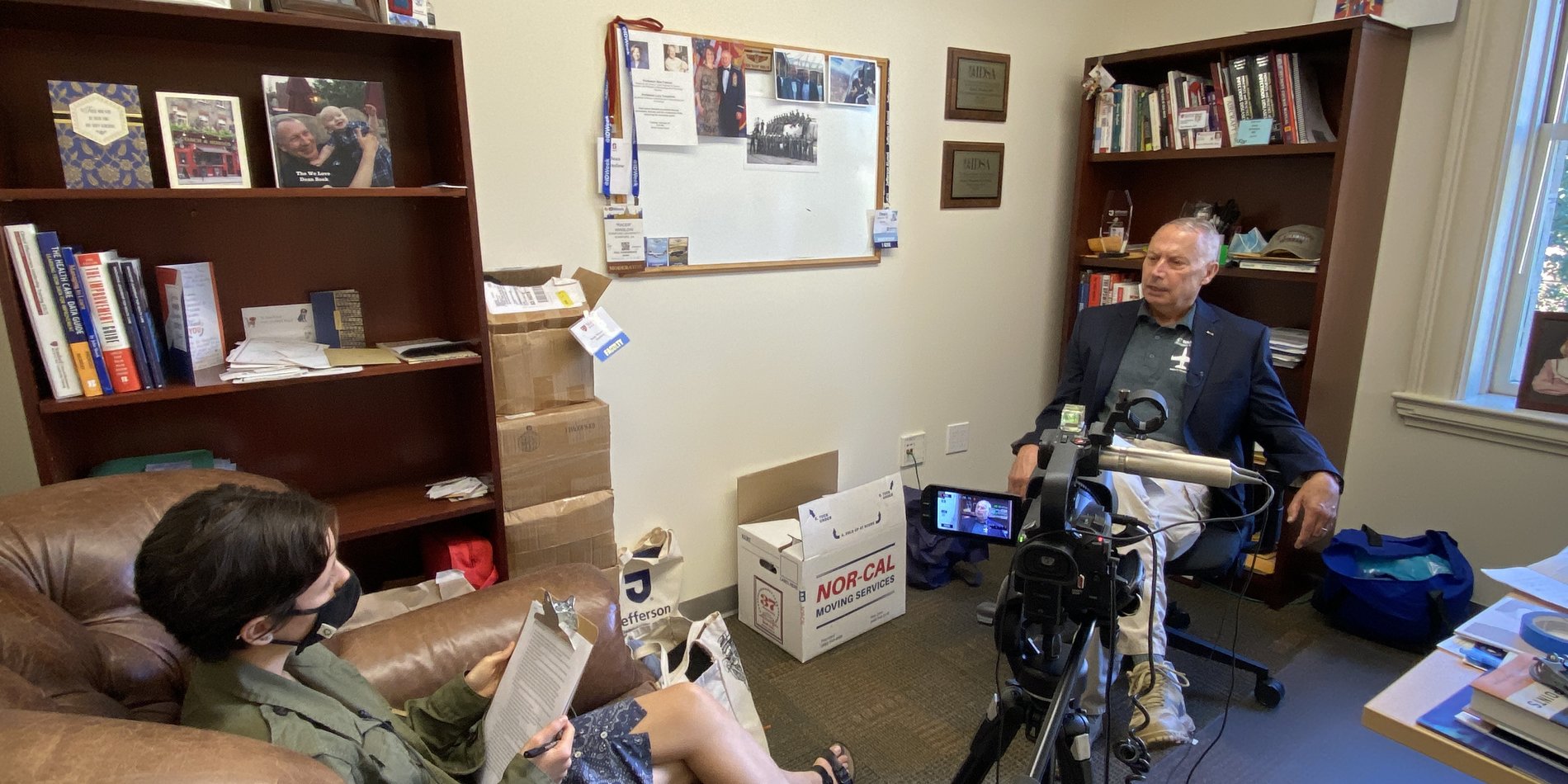Stanford Historical Society plans railroad sesquicentennial events

Stanford Locomotive
[This article was originally written by Kate Chesley and published by Stanford News Service on October 23, 2018.]
When Leland Stanford lifted a silver hammer at Promontory Summit, Utah, on May 10, 1869, and symbolically drove the last spike in the First Transcontinental Railroad track, he did more than just ceremoniously finish a construction project.
Stanford’s striking of what has become known as the Gold Spike also marked the creation of the coast-to-coast connection that revolutionized travel in the United States and accelerated western expansion. The rest, as they say, is history.
The First Transcontinental Railroad made possible the rapid and low-cost transportation of goods and people across the country. A trip that once took six months was finished in just one week. The fortune the railroad garnered for Stanford through his part ownership of the Central Pacific Railroad with a group of businessmen known as the “Big Four” created Stanford University.
To the Stanford Historical Society, the 800-member organization that encourages the study and understanding of Stanford’s history, the 150th anniversary of the completion of the First Transcontinental Railroad sounds like a good reason to pause, reflect and celebrate.
“There is no question that this is truly a transformative event, not only for Stanford University, but also for the nation,” said Laura Jones, director of heritage services, university archaeologist and president of the Stanford Historical Society. “And the story has Leland Stanford right in the middle of it.
The Stanford Historical Society has begun mapping out a series of events to mark the railroad’s sesquicentennial and discuss the ramifications of the railroad’s creation. The group is inviting participation by other interested university schools, centers and departments.
Society members are, for instance, cosponsoring with Continuing Studies a free film and discussion series featuring period movies that provide insight into the experience of those who built the railroad, portray the politics and graft involved in its construction and convey the way railroad workers were treated and stereotyped. Among the films under consideration is the 1939 epic Union Pacific, directed by Cecil B. DeMille.
A half-day symposium is tentatively planned to look at how transportation in general has transformed the West and what future innovations – including high-speed rail – might mean for California.
“We hope to tie the history of the First Transcontinental Railroad to current events, asking, for instance, whether current technology is as transformative or disruptive as the transcontinental railroad was in its time,” Jones said.
The group also hopes to partner with the Stanford Alumni Association to offer alums and others a trip to Sacramento to tour the Stanford mansion – now a state park – and the California State Railroad Museum. The museum has as one of its centerpieces the Gov. Stanford locomotive, which was the Central Pacific’s first locomotive.
In all its events, Jones said the group is committed to addressing uncomfortable truths about the railroad’s construction.
“The railroad was not such good news for everyone,” she said. “Much of the land that made the project affordable, for instance, was stolen by the United States government from Native Americans.”
In addition, the story of the railroad involves exploitation of the Irish and Chinese immigrants, who provided the manual labor for the Union Pacific and Central Pacific railroads, respectively.
“Part of our mission is to tell the Stanford story,” she said. “This event gives us a chance to do that as we connect our wider community to a crucial moment in U.S. history.”


